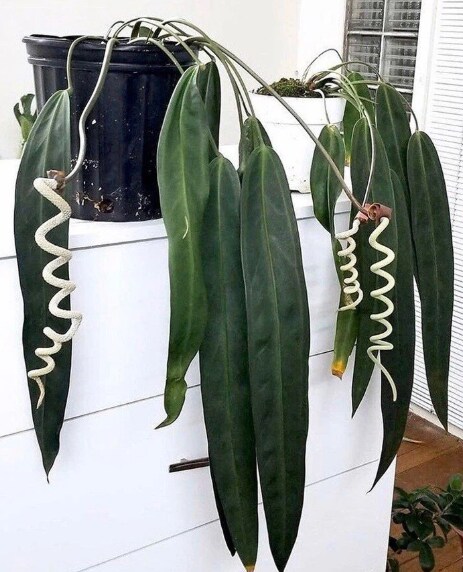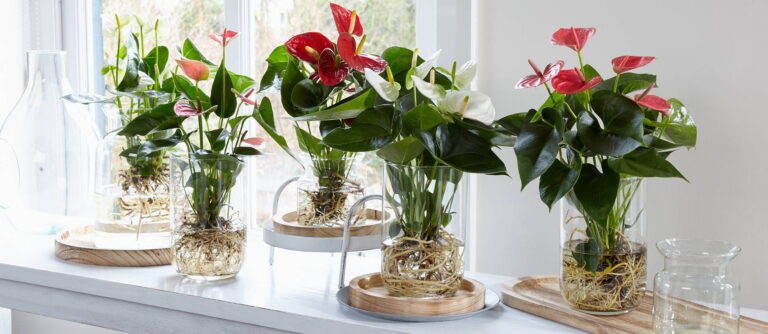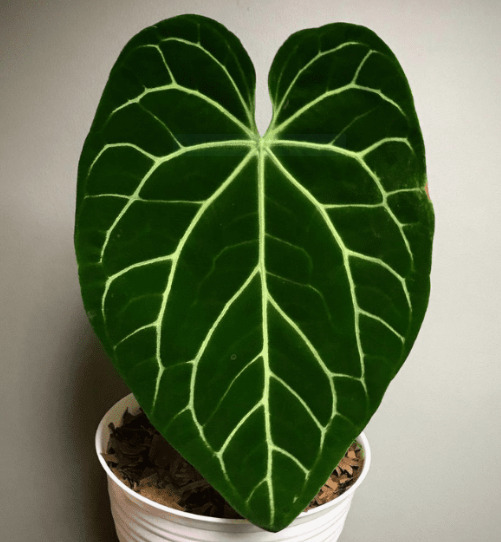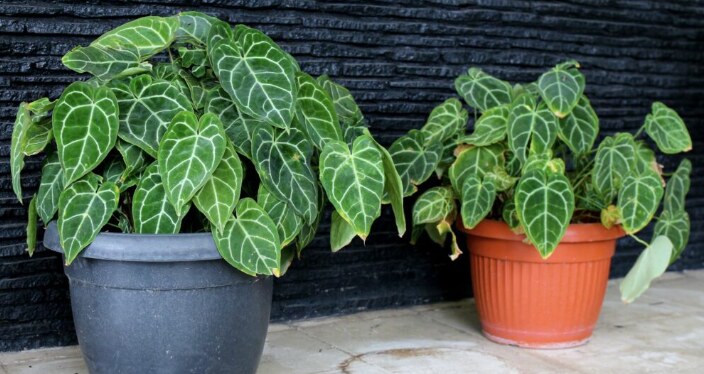Anthurium Vittarifolium: Origin, Care, and Propagation
Anthurium Vittarifolium, often known as Ribbon Anthurium or Strap Leaf Anthurium, is a relatively rare houseplant. It is known for its bright flowers and green leaves with prominent white variegation. If you are a plant collector and want a superb, rare plant, then Anthurium Vittarifolium is the perfect choice for your garden.
However, if you are unsure how to grow and take care of it, worry not. In this blog post we will share its growing and care requirements with some tips. So, keep reading this article till the end.
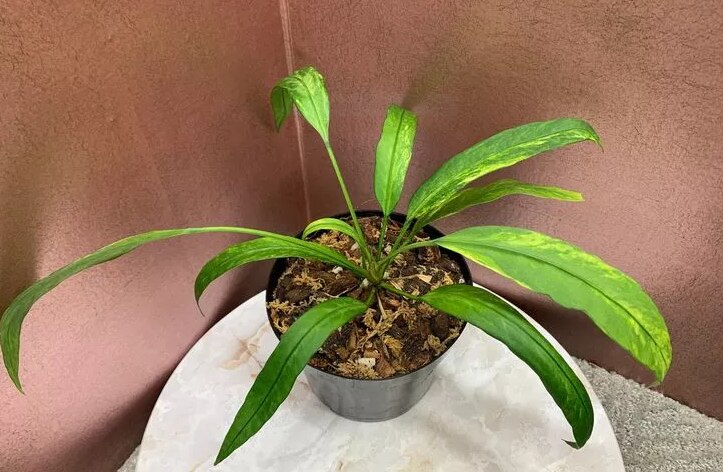
What is Anthurium Vittarifolium? Origin & Appearance
Anthurium Vittarifolium is a rare variety and a close relative to the flamingo flower. It is an epiphyte plant that grows on other plants and produces foliage similar to the Anthurium Pallidiflorum. The plant produces glossy foliage with pink blooms.
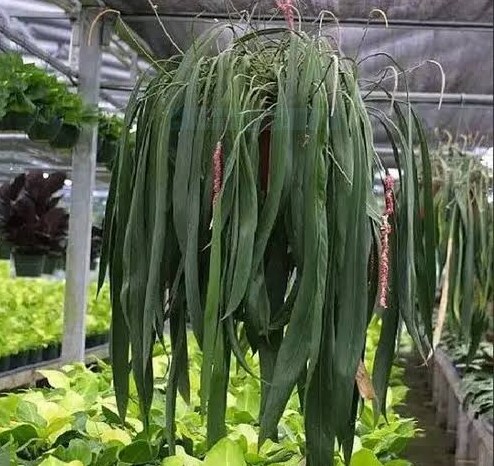
1. Origin:
This pretty plant originally came from the rainforests of Colombia, Brazil, and other regions of South America.
2. Appearance:
Anthurium Vittarifolium features green, narrow leaves with a leather-like texture. Their topside is semi-glossy while the underside looks like a matte finish. The bold white variegation on the leaves contrasts beautifully against the deep green background. It produces leaves on long, slender petioles or leaf stems and can grow up to 90 cm in length.
Anthurium Vittarifolium produces flowers on a spadix and spathe when it blooms. Its berries look pink to violet.
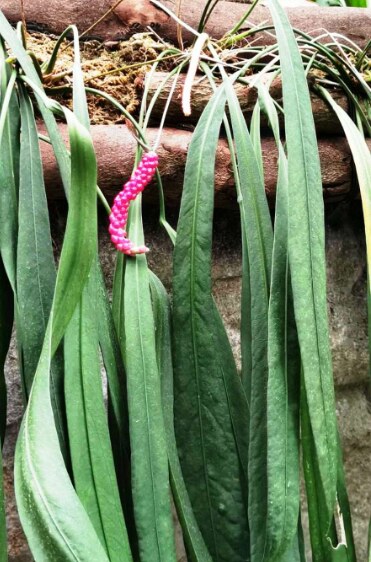
2. How to Grow Anthurium Vittarifolium Plant Indoors?
If you want to grow an Anthurium Vittarifolium plant indoors, then follow these tips:
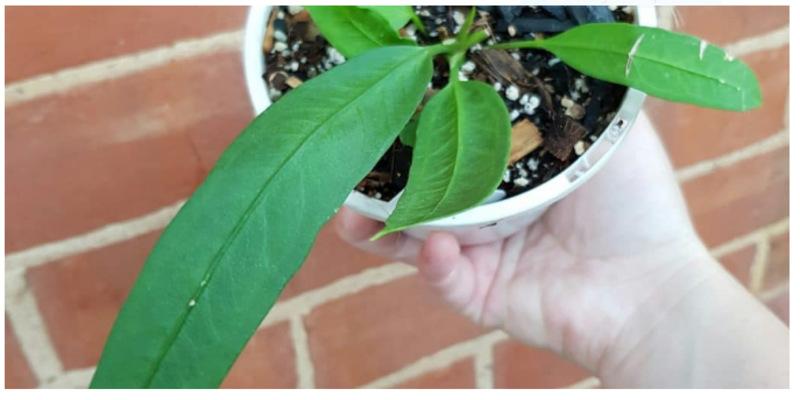
How to Care for Your Anthurium Vittarifolium? Complete Care Guide
Follow the tips and care requirements to properly grow and care for your Anthurium Vittarifolium.
1. Light: How much light is necessary for its growth?
Anthurium vittarifolium needs a minimum of 300 lux (300-foot candles) of light, while the desirable amount for this plant is 500+ lux. This plant can bear 1-2 hours of direct sunlight in the morning. Place your plant under the shed or in indirect sunlight if you flower during the day.
A minimal amount of direct sunlight is beneficial, so do not place your plant in direct sunlight for the whole day. Overexposure to direct sunlight can burn a plant’s leaves or change its colour.
Prefer partial sunlight for healthy growth and flowering of your plant.
2. Water Requirements: How Much Water Does Anthurium Vittarifolium Need?
Due to its tropical origin, Anthurium vittarifolium needs enough water to survive. Water your Anthurium Vittarifolium once a week or when the upper 1-2 inches of the potting soil become dry.
To water your anthurium vittarifolium, follow these simple steps.
This plant is slightly thirsty but shouldn’t be overwatered because it can be disturbed by it. Overwatering can cause root rot, fungal infection, and soggy soil. Constantly water your plant according to its environmental conditions.
3. Soil: What kind of soil is best for anthurium vittarifolium?
This houseplant thrives in a well-draining, chunky soil potting mix. A little acidic to neutral pH range is ideal for growing your Ribbon houseplant. You can make your potting mix by adding:
Using amendments is essential because they produce micropores that hold oxygen. When your plant grows under an excess amount of oxygen, it decreases the issue of root rot and nutrient deficiency.
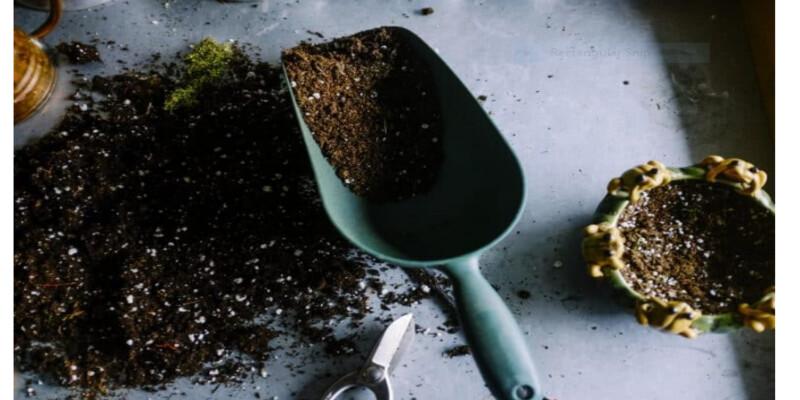
4. Temperature: Which temperature range is suitable for Anthurium Vittarifolium growth?
Anthurium Vittarifolium grows well in warm and humid areas because it is associated with tropical rainforests. You can maintain such temperature ranges indoors by ensuring temperatures are between 65 degrees Fahrenheit and 86 degrees Fahrenheit.

5. Humidity: How much humidity is enough for your Anthurium Vittarifolium?
Anthurium Vittarifolium needs good drainage and high humidity to thrive due to its tropical origin. A humidity level of 60% or more is ideal for its growth. Levels lower than this percentage can lead to stunted growth and stress out your plant. Provide enough humidity to your plant by using a pebble tray placed underneath, grouping the plants, or using a humidifier. Prevent your plant from hot and cold air.
6. Fertilizer: When should you fertilize your Anthurium Vittarifolium?
Fertilize your plant during its growing seasons to ensure more robust foliage.
Use liquid-based fertilizer for better plant growth. You can fertilize your plant every 6-8 weeks during this period. Avoid fertilizing during the dormant period (winter) because of the slow growth rate.
For fertilizing, follow the instructions on the packaging of the fertilizer.

How to Propagate Your Anthurium Vittarifolium From Mother Plant?
If you have this gorgeous Strap leaf plant, you can create multiple copies through cuttings, seed propagation, and divisions. All these propagation methods are discussed below.
1. Propagation Through Division: The Best Propagation Method
To propagate your Anthurium Vittarifolium through division, follow these steps.
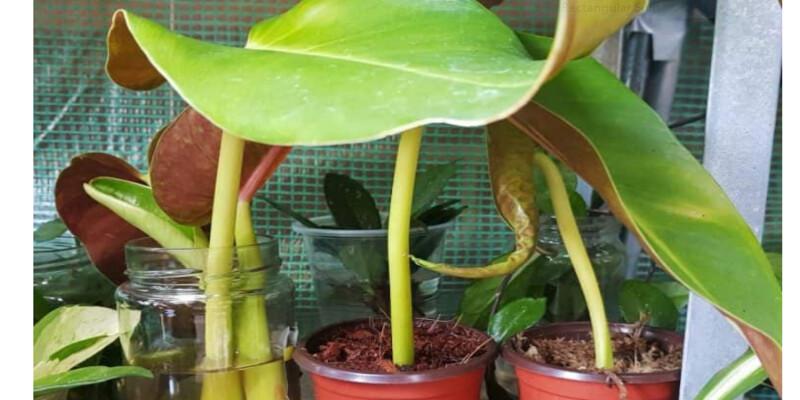
2. Propagation Through Stem Cuttings
- Use sterilized garden shears to remove the leggy parts of the plant due to unhealthy growth.
- Place the Stem cuttings in a new container and leave them for some time.
- After a few days, you will see new Anthuriums from the mother plant.
3. Propagation Through Seeds
Seed propagation is another effective way to grow new Anthuriums from the seeds of a mother, Anthurium Vittarifolium. For this:
Potting and Repotting of Your Anthurium Vittarifolium
When you provide ideal rainforest conditions indoors, your Anthurium Vittarifolium outgrows the pot size. If you see something like that, it indicates that it’s time to repot your beauty. The best time to repot your plant is in the spring.
Remove the wilted, dead, or discolored leaves and flowers for better growth. This will help you prune your plants easily from the top to the bottom.
Is Anthurium Vittarifolium Toxic to Pets and Humans?
1. Toxicity for Pets
Anthurium vittarifolium is a toxic houseplant for your dogs and cats. The American Society for the Prevention of Cruelty to Animals (ASPCA) lists some harmful plants of the Araceae family. Anthurium vittarifolium is one of them. So, keep your pets away from this plant to avoid skin diseases.
2. Toxicity to Humans
According to the California Poison Control System (CPCS), this plant also harms humans. It is a member of the Araceae family, which has oxalate crystals. If this tropical is ingested, it can cause skin itching and mouth, tongue, and lips pain. Ingestion can also cause breathing issues because of throat swelling.
Why and When to Prune Your Anthurium Vittarifolium?
Here are some reasons to prune your Anthurium Vittarifolium:
To Prune your Anthurium Vittarifolium, use:
Anthurium Vittarifolium Flower
When mature, Anthurium vittarifolium produces many flower clusters, each containing several flowers. This plant’s flowers are self-pollinating. Once pollination occurs, this tropical plant produces red berries, which contain seeds that sprout quickly.
Place your plant in sufficient light for more flowers.
Benefits of Anthurium Vittarifolium
1. Natural air purifier
According to a NASA investigation, anthuriums are the most popular air purifiers. They remove dust particles, making the air clean for breathing. Anthurium vittarifolium can quickly decrease almost 90 per cent of the concentration of formaldehyde and benzene, so this is the best option for cleaning the air.
Anthurium vittarifolium loves to grow in high humidity. This plant is likely to succeed in your indoor areas, where it can enjoy high moisture levels. This condition is suitable for thriving.
2. Symbolisms
This Anthurium plant is the symbol of growth and success, while its variety, anthurium vittarifolium, is the symbol of wealth and success. Taking proper care of anthurium vittarifolium makes you feel relaxed about this plant. Spending more time with this plant connects you to nature.
3. Health benefits
This green anthurium vittarifolium helps reduce anxiety and stress. Its soft, graceful leaves make it calm and peaceful.
4. Visual attraction
Anthurium vittarifolium is eye-catching. Its unique foliage makes it the best addition to your indoor décor. The leaves of this plant extend beautifully outside the pot, giving it a more stylish appearance.
Common problems of Anthurium Vittarifolium
1. Root rot
Overwatering, insufficient light, and undesirable hard or dry soil can cause root rot. A foul smell, mushy and soft roots, turning leaves yellow, and droopy leaves indicate that your plant is facing this problem.
To protect the defective roots, trim the soil and change it immediately.
2. Anthurium Vittarifolium Variegated:
The gorgeous variation of this plant is Anthurium vittarifolium variegated. Its unique features, like yellow and light green patches on its leaves, enhance its beauty.
Also Check What is Anthurium Regale?
FAQS
Is Anthurium Vittarifolium a rare plant?
Yes, anthurium vittarifolium is a rare tropical plant native to South America. It can be easily purchased from Etsy and other online plant markets.
What is the common name of Anthurium Vittarifolium?
Anthurium vittarifolium is commonly known as a flamingo flower, strap leaf anthurium, and ribbon anthurium.
Conclusion
Anthurium vittarifolium, also known as Ribbon Anthurium, is known for its bright flowers and green, and is easy to care for when grown indoors. With proper watering, enough light, high humidity, warm temperatures, and fertilizing during its growth season, it thrives well in your indoor garden.
Anthurium Vittarifolium is also easy to propagate via divisions, stem cuttings, and seeds. If it faces any problems like root rot due to overwatering, adjust its watering and other care requirements.

About Author
Hi, I’m Emily Davis, a passionate tropical plant enthusiast dedicated to sharing knowledge and expertise with plant lovers. Through his blog, I will provide guides, tips, and tricks for caring for tropical houseplants species like Alocasia, Anthurium, Calathea, Philodendron, Begonia, and many more that will help readers bring a touch of paradise into their own homes. With a deep love for the vibrant colors and lush textures of tropical flora, I’m committed to inspiring others to cultivate their own tropical oasis.

